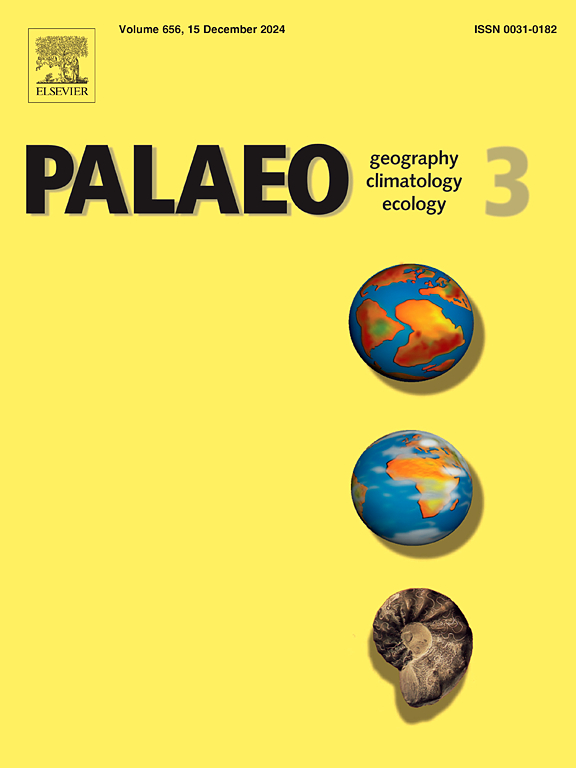Exploring the association between temperature and multiple ecomorphological traits of biocalcifiers (Brachiopoda)
IF 2.6
2区 地球科学
Q2 GEOGRAPHY, PHYSICAL
Palaeogeography, Palaeoclimatology, Palaeoecology
Pub Date : 2025-03-08
DOI:10.1016/j.palaeo.2025.112883
引用次数: 0
Abstract
An increasing number of studies have addressed the varied responses of different phylogenetically specific groups to climate change. However, the dominant mechanisms and robust data-driven evidence remain underexplored. This study investigated the environmental resilience of biocalcifiers, with a focus on living brachiopods – organisms that have persisted throughout Earth's geo-history and serve as vital archives of marine life. By analysing the biogeographical patterns of brachiopods, we assessed the influence of temperature on ecomorphological traits such as species richness, environmental tolerance, shell mineralisation and ornamentation, and other shell morphologies. Using the latest comprehensive database and advanced computational tools, including correlation analysis and machine learning, we uncovered moderate relationships between temperature and these traits. Machine-learning models achieved a temperature prediction performance with a root mean squared error (RMSE) of approximately 5 °C when incorporating all tested variables. Our findings highlight the significant role of macroevolutionary adaptation history in shaping brachiopod biogeographical patterns, as evidenced by strong Spatial Autocorrelation phenomena of the tested ecomorphological-trait variables. This study not only advances our understanding of brachiopod ecology and biogeography but also contributes to broader discussions on climate change, biodiversity, and the resilience of marine ecosystems. By integrating traditional and novel methodologies, we provide a framework for exploring complex ecological interactions, offering insights into the resilience of marine ecosystems and tackling current global challenges.
求助全文
约1分钟内获得全文
求助全文
来源期刊
CiteScore
5.90
自引率
10.00%
发文量
398
审稿时长
3.8 months
期刊介绍:
Palaeogeography, Palaeoclimatology, Palaeoecology is an international medium for the publication of high quality and multidisciplinary, original studies and comprehensive reviews in the field of palaeo-environmental geology. The journal aims at bringing together data with global implications from research in the many different disciplines involved in palaeo-environmental investigations.
By cutting across the boundaries of established sciences, it provides an interdisciplinary forum where issues of general interest can be discussed.

 求助内容:
求助内容: 应助结果提醒方式:
应助结果提醒方式:


